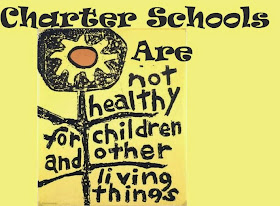No Rich Child Left Behind - NYTimes.com:
No Rich Child Left Behind
Here’s a fact that may not surprise you: the children of the rich perform better in school, on average, than children from middle-class or poor families. Students growing up in richer families have better grades and higher standardized test scores, on average, than poorer students; they also have higher rates of participation in extracurricular activities and school leadership positions, higher graduation rates and higher rates of college enrollment and completion.
Whether you think it deeply unjust, lamentable but inevitable, or obvious and unproblematic, this is hardly news. It is true in most societies and has been true in the United States for at least as long as we have thought to ask the question and had sufficient data to verify the answer.
What is news is that in the United States over the last few decades these differences in educational success between high- and lower-income students have grown substantially.
One way to see this is to look at the scores of rich and poor students on standardized math and reading tests over the last 50 years. When I did this using information from a dozen large national studies conducted between 1960 and 2010, I found that the rich-poor gap in test scores is about 40 percent larger now than it was 30 years ago.
To make this trend concrete, consider two children, one from a family with income of $165,000 and one from a family with income of $15,000. These incomes are at the 90th and 10th percentiles of the income distribution nationally, meaning that 10 percent of children today grow up in families with incomes below $15,000 and 10 percent grow up in families with incomes above $165,000.
In the 1980s, on an 800-point SAT-type test scale, the average difference in test scores between two such children would have been about 90 points; today it is 125 points. This is almost twice as large as the 70-point test score gap between white and black children. Family income is now a better predictor of children’s success in school than race.
The same pattern is evident in other, more tangible, measures of educational success, like college completion. In a study similar to mine, Martha J. Bailey and Susan M. Dynarski, economists at the University of Michigan, found that the proportion of students from upper-income families who earn a bachelor’s degree has increased by 18 percentage points over a 20-year period, while the completion rate of poor students has grown by only 4 points.
In a more recent study, my graduate students and I found that 15 percent of high-income students from the high school class of 2004 enrolled in a highly selective college or university, while fewer than 5 percent of middle-income and 2 percent of low-income students did.
These widening disparities are not confined to academic outcomes: new research by the Harvard political scientist Robert D. Putnam and his colleagues shows that the rich-poor gaps in student participation in sports, extracurricular activities, volunteer work and church attendance have grown sharply as well.
In San Francisco this week, more than 14,000 educators and education scholars have gathered for the annual meeting of the
American Educational Research Association. The theme this year is
No Rich Child Left Behind - NYTimes.com:




















